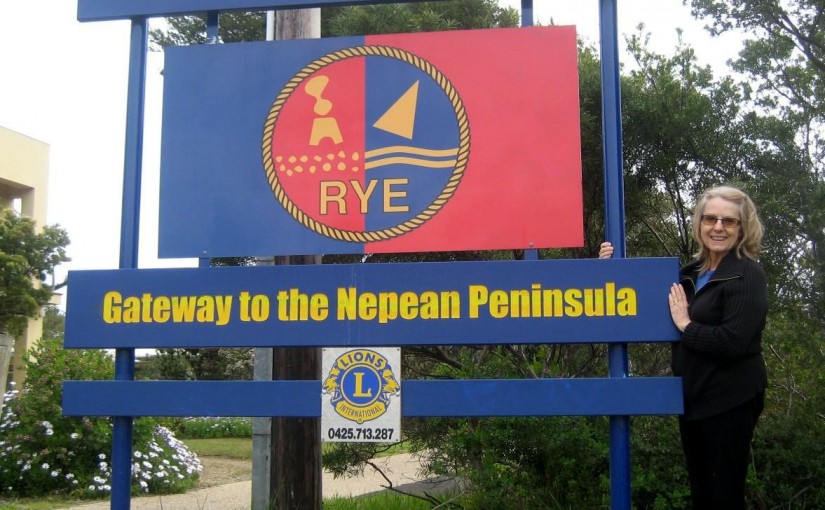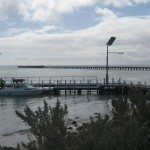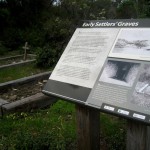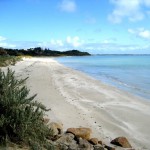Richard Holdsworth, one time local man who has been writing articles in this magazine for years, has moved to Australia but can’t get out of the habit of producing words and pictures he thinks would interest our readers. Here Richard takes a trip to a town that has adopted a name we know only too well in…
A FRESH LOOK AT RYE
By Richard Holdsworth
Any town with the name Rye is going to be hard pressed to live up to the sheer English charm and delight of the “real” Rye in East Sussex and Rye in Victoria, Australia, is never going to emulate the narrow streets, overhanging buildings and cosy English tea shops which we know so well.
Yet Rye on the Mornington Peninsula and some 50 miles south of Melbourne has its own attractions which make it every bit as popular as Rye, East Sussex; the Australian Rye has some amazing beaches, spacious grassy and shaded camping grounds stretching for miles and right on those beaches. There’s a National Park where you can walk, picnic or simply escape the razzle dazzle of city life while at night, waiters buzz around tables serving foods from all four corners of the world.
The Mornington Peninsula is a narrow strip of land which forms the east “wing” around Port Phillip Bay; the beach which faces the bay has these wonderful sandy beaches and calm seas but if you cross the strip of land you are presented with the Ocean Beach and this is where the lads and lasses challenge the powerful surf – next stop the South Atlantic!
Whatever turns you on – making sand castles or soaking up the sun on the quiet beach – or spending your day riding the tops of roller coasters you are sure to join the jostling crowds in the evening frequenting one of the many restaurants where all tastes are satisfied. Mediterranean cuisine arrived in Australia after the Second World War and in recent times that has been supplemented by exotic foods from the Far East with the great influx of entrepreneurs from China, Taiwan, Japan, Malaysia and the great Indian sub-continent. Whatever your fancy – you can bet your bottom Dollar you will be satisfied on the pavements a stone’s throw from the beach at Rye in Australia.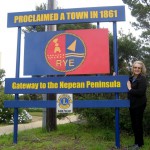
Welcome to Rye in the Garden State of Victoria, Australia.
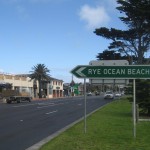
FIRST SETTLERS
Who can possibly have imagined that all this would spring up in this challenging land when the first settlers stepped ashore around 200 years ago in a little cove named Sullivan Bay after the Secretary of State of War and Colonies of the time, John Sullivan?
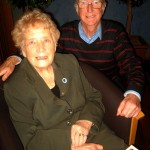
Port Phillip Bay had been chartered in 1802 by Lieutenant John Murray who claimed it for the British Crown, while Matthew Flinders further explored the area the same year. They had been despatched by Captain Philip Gidley King, the governor of the British settlement at Botany Bay, and King was determined to find what other treasures lay in the latest British colony. The area was found to have much potential and the British government was also worried that the French might snatch it from under their noses. It decided to get in first.
Two ships set sail from Portsmouth on April 24, 1803, led by HMS Calcutta under Captain Daniel Woodriff and carried 308 convicts and the garrison of marines to act as their guards. Also on board the Calcutta were women, children and other family members of the marines. The second, smaller ship, the Ocean, carried free settlers, public servants and equipment needed to establish the first settlement. The voyage – via Tenerife, Rio de Janeiro and Cape Town where the two ships took on supplies – lasted almost six long, weary months in which time nine of the convicts died.
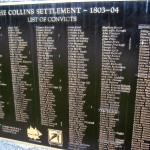
Also on board the Calcutta was Lieutenant-Colonel David Collins of the Royal Marines who was to be the first Lieutenant-Governor of the new settlement. Part of his task was to take control of this area of the new Colony and protect it from falling into the hands of the French who were active at that time in the seas off southern Australia. Collins was also charged with setting up a base for a future fishing industry and establishing farming in this unknown part of Britain’s latest outpost of the Empire.
And, most important of all, this part of Australia was seen as a great source of timber needed to replenish the many warships lost in the devastating war with France.
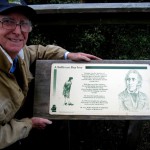
BUTCHERS, BAKERS AND CANDLESTICK MAKERS
At his disposal were the marines and the convicts whose attributes were not only law breakers (mainly deported for minor theft) but also tradesman whose skills were invaluable. These included carpenters, bricklayers, fishermen, gardeners, butchers, bakers, shoemakers and one school teacher. Others included hairdressers, coachmen and servants. Soon tents and huts appeared and trees, scrub and bush were cleared and cultivation begun to establish vegetables to feed the garrison… a hospital was established under the guidance of the surgeons who had sailed on the Calcutta.
Despite these efforts, the new settlers were hampered by the lack of fresh water although there was a plentiful supply from a river – later named River Torrens – a few miles distant. Unfortunately, this was not found at the time and within a few months Collins instructed the new settlement to be abandoned, much of what they had built dismantled and carried on board the two ships and the little flotilla sailed across Bass Straight to Van Diemen’s Land – the island of Tasmania – and that is where they stayed. They established a new settlement – later named Hobart – and Collins became the first Lieutenant-Governor until his death in 1810.
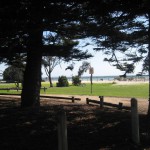
But Sullivan Bay was not to fail entirely; a number of convicts had escaped from the party and contact had been made with the indigenous Aborigines in the area. One of the escaped convicts was William Buckley who was looked after by the Wathaurung tribe and lived among them for many years to come. And when the next ships arrived carrying more British settlers, Buckley was on hand to introduce the natives and to help build upon the good work done at Sullivan Bay.
SAVE SULLIVAN BAY
In 1875, the Victorian government recognised the significance of Sullivan Bay; it had been the site of the first recorded marriage in Victoria, first birth and death, first school and the first printing of a newspaper and had seen the establishment of trades such as stonemasonry. The site was recognised for its historical importance and given protection.
Today there is a display which tells of the history of Sullivan Bay, a memorial naming all who landed back in 1803 and two marked graves which are said to contain the remains of some 20 convicts and pioneers from that first settlement. It is well worth a visit.
Saving this site was no easy task and developers sought to buy much of the land; it is mainly due to the foresight of one-time May or of Ry e, Dor ot hy Houghton, as Chairman of the Collins Settlement Historic Advisory Committee that this was achieved. Dorothy initiated a public fund which raised over $100,000 and when this fell short of the target needed to beat off property developers, she enlisted the support of the State government and secured the extra funding needed. It is now administered by the Department of Conservation and National resources with assistance from volunteers from Friends of the Site.
The name Rye was accorded to the little settlement by the Government Names Committee back in 1861. There must have been a goodly number of Sussex men on that committee as the original name given – Tootgarook or Land of the Croaking Frog – was soon overturned and Rye Sussex became Rye Victoria, Australia.
And another early township just across Mornington Peninsula was awarded the name Hastings. I’ll bring you that history in a future edition of this magazine. Or if you want to read more tales of Australia – I can recommend my book IN THE HOT SEAT- posted in the UK for just £11.95 inc.post and packing. Details from: [email protected]
First Published in “Rye’s Own” November 2015
All articles, photographs, films and drawings on this web site are World Copyright Protected. No reproduction for publication without prior arrangement. (Hard Copy Back Numbers Still Available) © World Copyright 2017 Cinque Ports Magazines Rye Ltd., Guinea Hall Lodge Sellindge TN25 6EG
